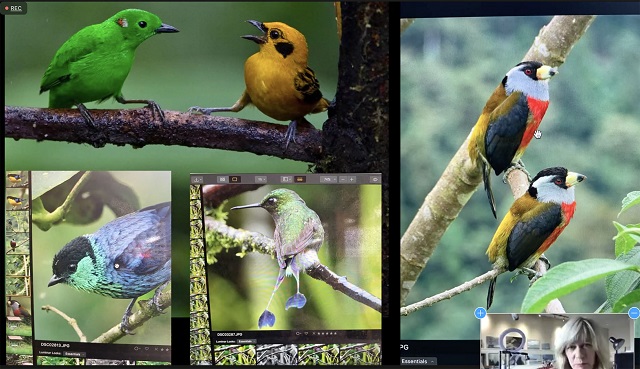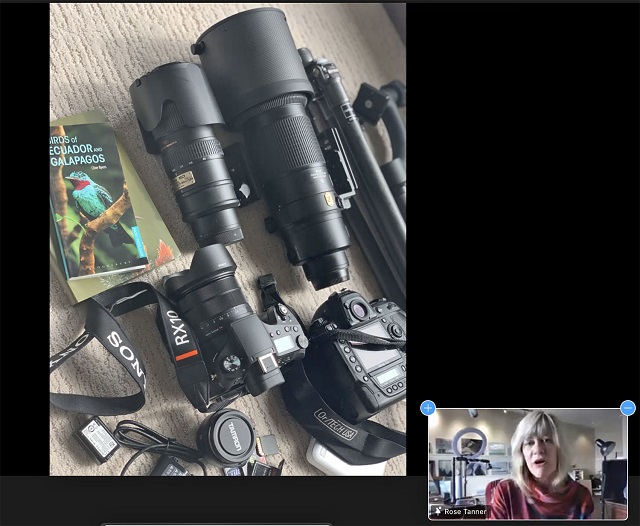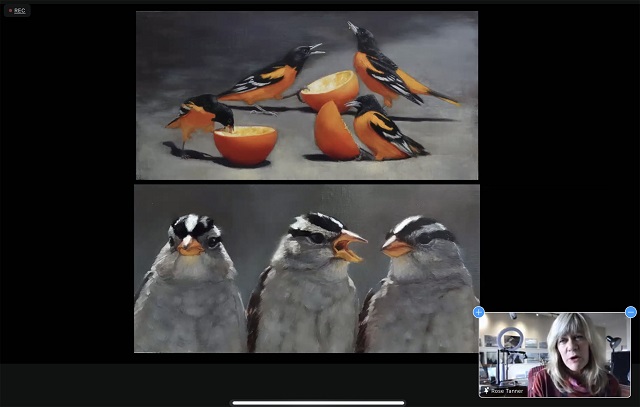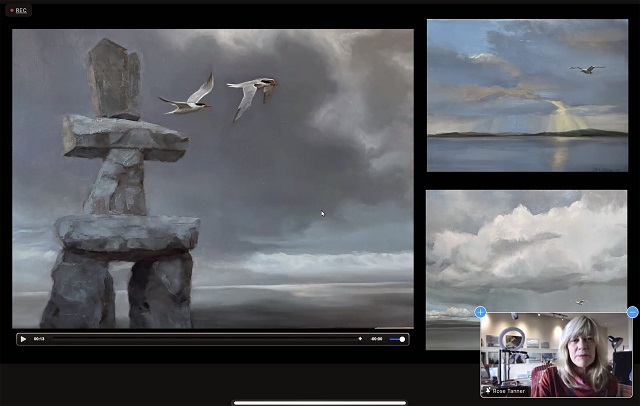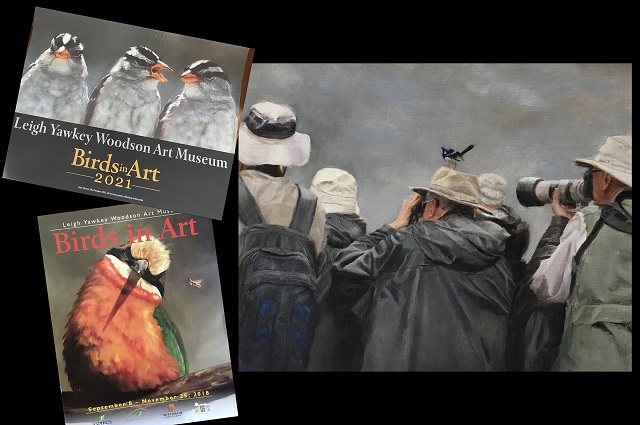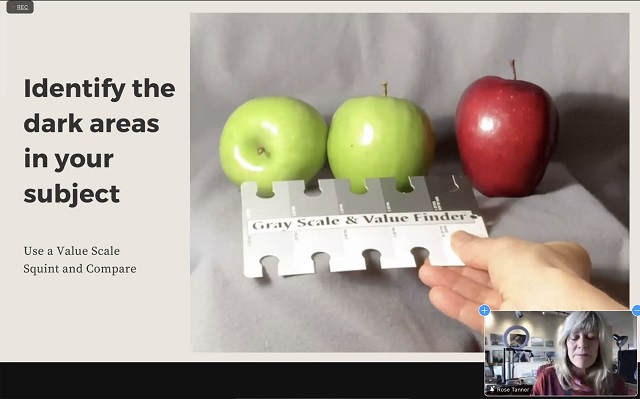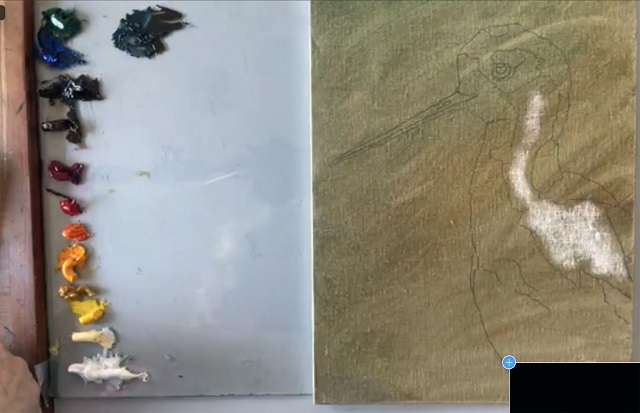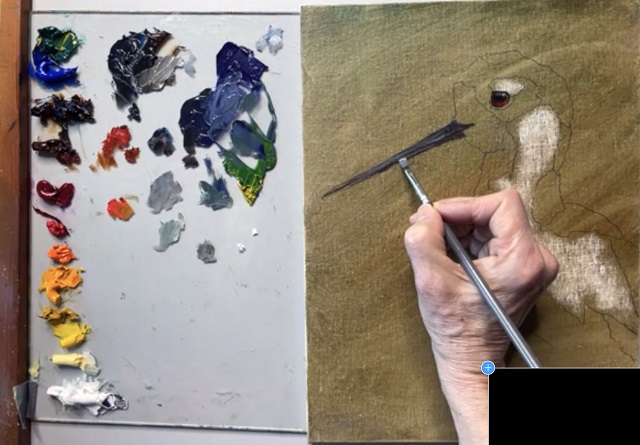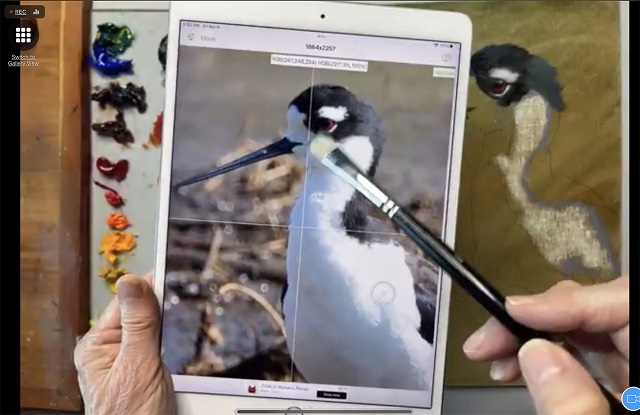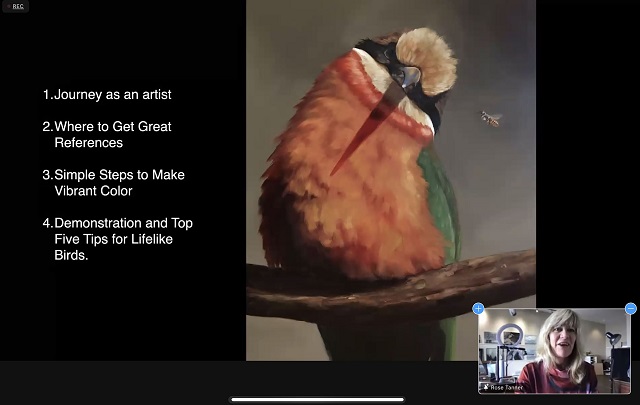
Rose Tanner – Friday Night Guest – April 8, 2022
(Submitted by Sally Williams)
Award-winning artist, teacher and tutor Rose Tanner specializes in avian art. Her love of birds – their colours, behaviour, emotions, resilience and vulnerability – is evident in her wonderfully expressive artwork.
Rose’s presentation began with a slide show covering a few key areas: her journey as an artist, where to get great references, simple steps to make vibrant colours, and some important dates in bird conservation history.
The presentation showed the variety of birds Rose has had the privilege of documenting, near and far, through her photography and paintings. While pet zebra finches sparked her love of bird observation, she has traveled up to 12,000 km to visually record a species! Fortunately, birds are all around us and we don’t need to go quite so far to photograph, sketch and paint them.
For Rose, photographs are crucial for studio work and she highly recommends bird photography workshops. She often creates a scene to place the subject in by referring to photos—a bird perching on a teacup, for instance, or a pair of courting cardinals exchanging seeds and flowers. These settings allow viewers to connect with the human characteristics that birds display, such as courtship, singing, holding funerals and enjoying socials. Images might also be cropped to create an avian portrait, which has proven popular with collectors. Another wonderful piece of advice is to gather outdoor props such as branches, evergreen foliage and seeds. These resources allow you to carry out a concept and work all year round, an important factor when working towards seasonal deadlines.
The presentation next moved on to the painting demonstration (a Black Throated Stilt on pre-stained Belgian linen). Understanding colour mixing to capture light and luminous shadows was an inspiring and important part of Rose’s demonstration, reminding us of what we can achieve with our palette when we understand not just value, but colour temperature. Colours shown on her palette include:
- Viridian
- Cobalt blue
- Transparent oxide brown (burnt sienna is another good choice)
- Permanent Rose
- Alizarin crimson
- Cadmium red
- Cadmium orange
- Cadmium yellow (deep, lemon, and light).
- Cadmium yellow deep is a good solution for lightening an area
- Naples yellow is also favoured for lightening but avoid using white too early on.
- Titanium white (use sparingly)
Some key points we came away with for painting lifelike birds:
- -Plan ahead and consider the light-source.
- -Bend dark and light colours to be cool or warm—mastering the darks will make your work more vibrant and allow the lighter areas to sing.
- -Think thin to thick:
- -Balance transparent thin dark colour with opaque light colour
- -Try not to disturb or contaminate the darks.
- -Don’t over mix!
- -Enjoy the sparks of colour that will give you dynamic greys.
- Still life painting is a great way to determine colour temperature. Be patient and take the time to figure out what to suggest vs detailing.
Toggling back and forth between cool (greens and purples) and warm (reds and yellows) mixes, while pointing out parts of the photo reference guiding her skilled brushwork, we saw a bird come to life on linen panel without using any black paint. Beginning with the eye (the pupil first, then the iris), Rose determined the light and advised us to create one if needed. This gives life to the eye. From there she moved outwards, mapping dark and light. She discussed her favourite brushes as she worked (Rosemary & Co), and a few are listed here:
- Soft blending brushes (including a fan brush)
- Comber brush (for painting grasses)
- Flat brushes in various sizes
- Small round brushes for detail
In addition to answering our questions, Rose advised those of us interested in wildlife conservation and painting nature should seek out groups such as wildlife rehabilitation organizations, local nature groups and annual birding festivals, such as FeatherFest in Galveston, Texas, and the Festival of Birds in Point Pelee. Rose reminded us about the important part art can play in bringing attention to environmental issues and species at risk, such as Piping Plovers (one of her favourite birds to paint).
Rose encouraged us to get to know the Leigh Yawkey Woodson Art Museum, in Wausau, Wisconsin, where her work resides in the museum’s permanent collection. Bee Curious was chosen to grace the cover of the museum’s Birds in Art magazine, and The Gossiper was selected for a 2021 Birds in Art promotional poster. For those interested, the annual Birds in Art submission information can be found here: https://www.lywam.org/exhibition/birds-in-art-2/ Rose hopes her work inspires people to spend more time outdoors and discover the importance of nature, and to realize we share this planet with many species that are as worthy of survival as us. “Paint what inspires you” and “When you give creativity the power to lead, anything can happen”.
Thank you so much, Rose, for an articulate and easy to follow demonstration and for opening our eyes to the beauty and very human characteristics of our avian friends.
To learn more about Rose, or sign up for one of her workshops, you can visit her website: https://www.rosetanner.com/about
The images of Bee Curious and The Gossiper are borrowed from Rose’s website.
Facebook: https://www.facebook.com/rosetannerart
Instagram: https://www.instagram.com/rosetannerart/
